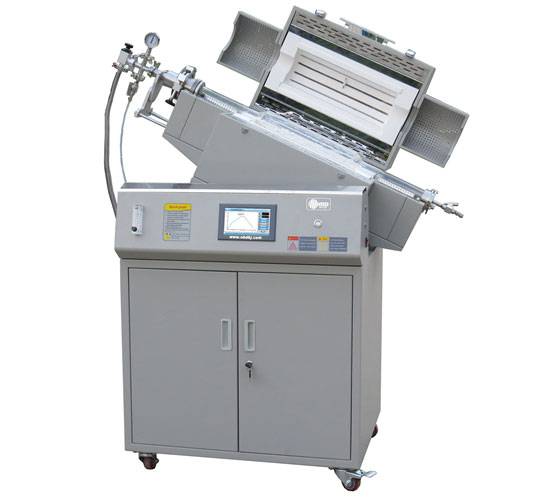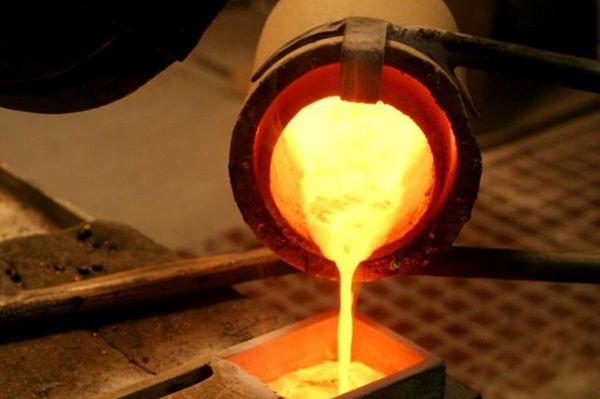Types and Structures of Vacuum Atmosphere Furnaces
Refining Furnaces
Refining furnaces play a crucial role in the production of low carbon and micro carbon ferroalloys, as well as manganese metal materials. These furnaces are available in two primary configurations: fixed immobile and tilting versions. The fixed immobile furnaces typically operate without a cover, producing commodities with carbon content exceeding 0.5%. In contrast, tilting furnaces usually feature a cover, enabling them to produce commodities with carbon content below 0.5%.
The choice between fixed and tilting furnaces often depends on the desired carbon content in the final product. Fixed furnaces, without covers, are more suited for processes requiring higher carbon levels, while tilting furnaces, equipped with covers, are ideal for achieving lower carbon content. This distinction in design allows for precise control over the carbon content, which is essential for various industrial applications.
Moreover, the operational efficiency of these furnaces can be further enhanced through the use of advanced heating methods. For instance, electric-powered furnaces, though less common, offer precise temperature control and are often used in research and development due to their ability to achieve specific heat profiles. These furnaces utilize heating elements made from materials like iron chrome aluminum and nickel chrome alloys, ensuring reliable and consistent heat generation.
In summary, refining furnaces are indispensable in the production of ferroalloys and manganese metal materials, with their design variations catering to different carbon content requirements. The integration of advanced heating technologies further augments their operational capabilities, making them vital tools in high-temperature industrial processes.
Reduction Furnaces
Reduction furnaces are pivotal in the metallurgical industry, primarily employed for the melting of ferrosilicon, high carbon ferromanganese, silicomanganese, and calcium silicon alloy. These furnaces operate as continuous production units, ensuring a steady flow of molten materials by regularly removing slag and alloy. The heart of these furnaces, the melting pool, is constructed from large carbon brick masonry, which is renowned for its durability and thermal efficiency.

One of the notable advancements in reduction furnace technology is the hydrogen reduction furnace. This variant excels in several key areas:
- Material Reduction Efficiency: By fully mixing materials with hydrogen, the reduction time is significantly shortened, leading to substantial savings in hydrogen consumption.
- Temperature Control: Post-reduction, the furnace can rapidly or gradually lower the temperature based on the specific requirements of the materials, offering greater flexibility in processing.
- Automated Control Systems: The entire process, including time, temperature, gas flow rate, valve actions, and reaction chamber pressure, is meticulously controlled by an industrial microcomputer, ensuring precision and consistency.
- Advanced Pressure Control: The use of imported pressure control systems ensures closed-loop control, providing high stability and reliability.
- Corrosion-Resistant Components: The adoption of imported corrosion-resistant stainless steel pipe fittings and valves guarantees airtightness and longevity.
- Safety Features: The furnace is equipped with an impeccable alarm function and safety interlock device, enhancing operational safety.
These features collectively make hydrogen reduction furnaces a superior choice for industries requiring efficient, reliable, and safe high-temperature processing.
Operational Characteristics and Divisions
Closed vs. Open Furnaces
Furnaces can be broadly categorized into closed and open types, primarily distinguished by the presence or absence of a shell. This fundamental difference impacts both their operational efficiency and maintenance requirements.
Open Furnaces:
- Design: Open furnaces feature an exhaust hood positioned above the furnace mouth. This design allows for direct access to the heating chamber, enabling operators to add or remove sample tubes while the furnace is empty.
- Operational Flexibility: The open-top configuration provides flexibility, allowing for quick changes in the sample load. However, this convenience comes at the cost of thermal efficiency, as the open design results in more heat loss and potentially less controlled heating conditions.
Closed Furnaces:
- Design: In contrast, closed furnaces are equipped with a refractory concrete and water-cooled metal hood, which seals the furnace mouth. This design not only enhances thermal efficiency but also improves the overall working conditions by minimizing heat exposure to operators.
- Operational Efficiency: The closed-bottom configuration facilitates easier insertion and removal of tubes without the need to shut off the heat source, thereby maintaining a consistent temperature environment. This leads to higher productivity and better control over the heating process.
- Maintenance Challenges: While closed furnaces offer superior operational benefits, they are more complex to operate and maintain. The sealed environment requires precise control and regular maintenance to ensure optimal performance and longevity.
In summary, the choice between closed and open furnaces hinges on the specific requirements of the application, balancing the need for operational flexibility and efficiency against the complexity of maintenance and control.

Rotary vs. Fixed Furnaces
Furnaces can be broadly classified into two main categories based on the structure of their furnace chamber: rotary and fixed. Each type has distinct operational characteristics and advantages.
Rotary Hearth Furnaces
Rotary hearth furnaces feature a rotating bottom, which allows for continuous processing and high energy efficiency. These furnaces are particularly advantageous in applications requiring multiple atmospheres, as they can achieve this within a single unit, significantly reducing both investment and operating costs. The design of rotary furnaces ensures high utilization of input energy compared to stationary furnaces, making them highly efficient. Additionally, their flexibility allows them to handle a wide variety of feed materials, from metallics and scrap lead to dust drosses and battery paste refinery drosses.
The operational simplicity of rotary furnaces is another notable feature. They are typically batch furnaces, meaning that the components of the furnace charge can be easily calculated on a weight or volume basis. This allows for straightforward operation by relatively unskilled workers who can manage the process of charging, smelting, and tapping the furnace bullion and slag. The smelting process in a rotary furnace generally takes between 4 to 6 hours, and the slag produced is often FeS–Na2S matte, which has a melting point significantly lower than that of silicate slags, further enhancing the efficiency of the process.
Fixed Immobile Furnaces
In contrast, fixed immobile furnaces have a stationary bottom, typically constructed from materials like asbestos sheet, refractory insulation, clay brick, and carbon brick. These furnaces are known for their durability and the ability to handle high-temperature processes. While they lack the continuous processing capability of rotary furnaces, fixed furnaces are often preferred in applications where stability and long-term reliability are critical.
The choice between rotary and fixed furnaces depends on various factors, including the specific requirements of the process, the nature of the feed materials, and the desired output. Rotary furnaces offer flexibility and efficiency, making them suitable for a wide range of applications, particularly those involving multiple atmospheres and varied feed materials. Fixed furnaces, on the other hand, provide stability and durability, making them ideal for high-temperature processes where consistent performance over extended periods is essential.
Related Products
- Vacuum Hot Press Furnace Machine Heated Vacuum Press
- Vacuum Hot Press Furnace Heated Vacuum Press Machine Tube Furnace
- Vacuum Heat Treat and Pressure Sintering Furnace for High Temperature Applications
- Vacuum Heat Treat Sintering Brazing Furnace
- 2200 ℃ Graphite Vacuum Heat Treat Furnace
Related Articles
- Vacuum Laboratory Furnaces in Advanced Materials Research
- The Ultimate Guide to Vacuum Pressure Sintering Furnace: Benefits, Applications, and Working Principle
- Maximizing Efficiency and Precision with Vacuum Graphite Furnaces
- Comprehensive Guide to Vacuum Hot Press Furnace Application
- Materials Science with the Lab Vacuum Furnace



























